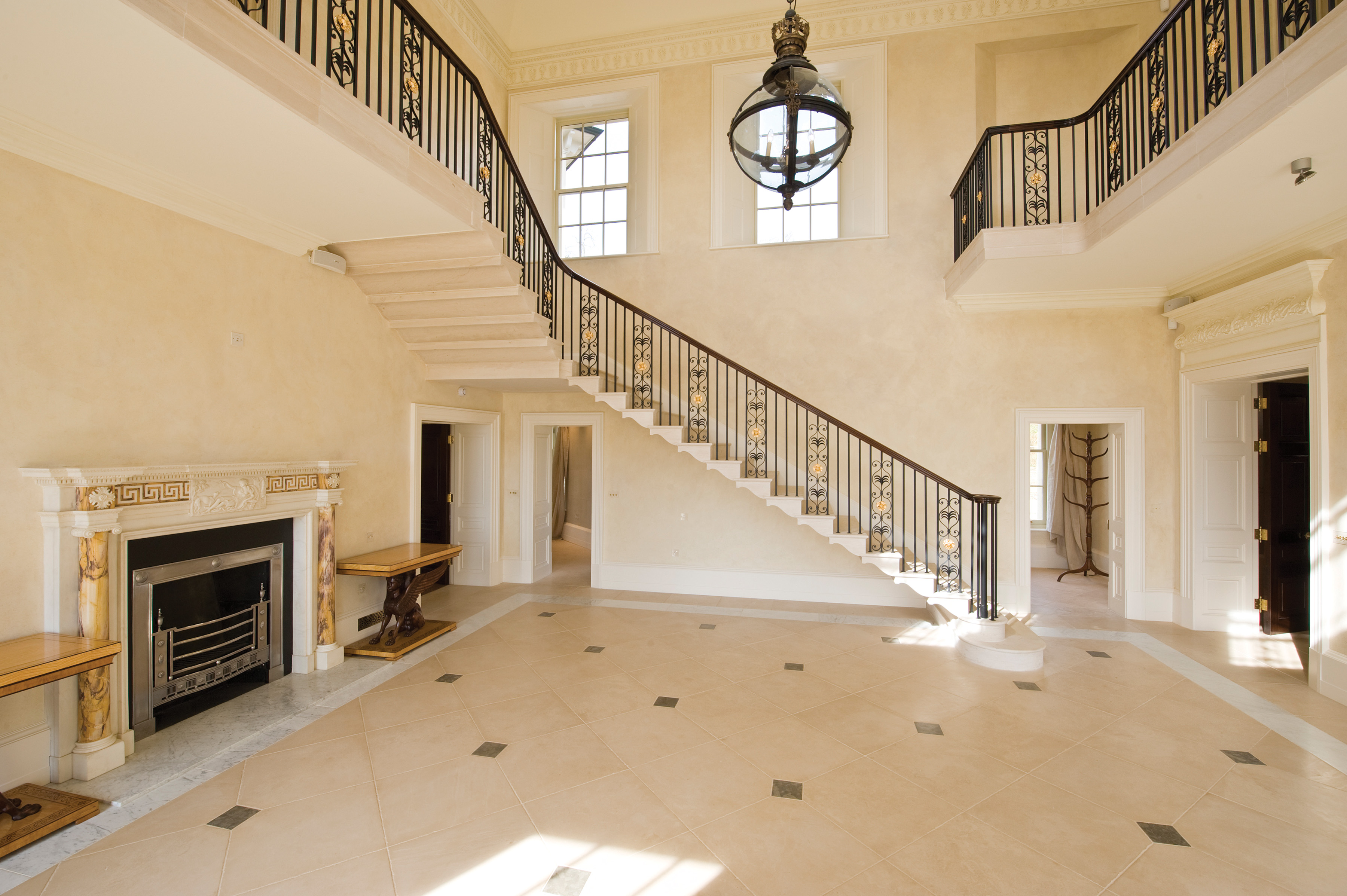REPORT : Interiors
When it has to be natural stone
With the announcement of the Hard Surfaces exhibition, there is a lot in the latest issue of Natural Stone Specialist about the products that are expanding the repertoire of the industry. But there are still plenty of people who will not accept alternatives to what nature provides. Here we look at some of the ways natural stone is enhancing interiors today.
There are few, if any, interior design features more guaranteed to inspire genuine awe than a stone staircase, especially those that are generally (although inaccurately) described as cantilevered or spiral staircases.
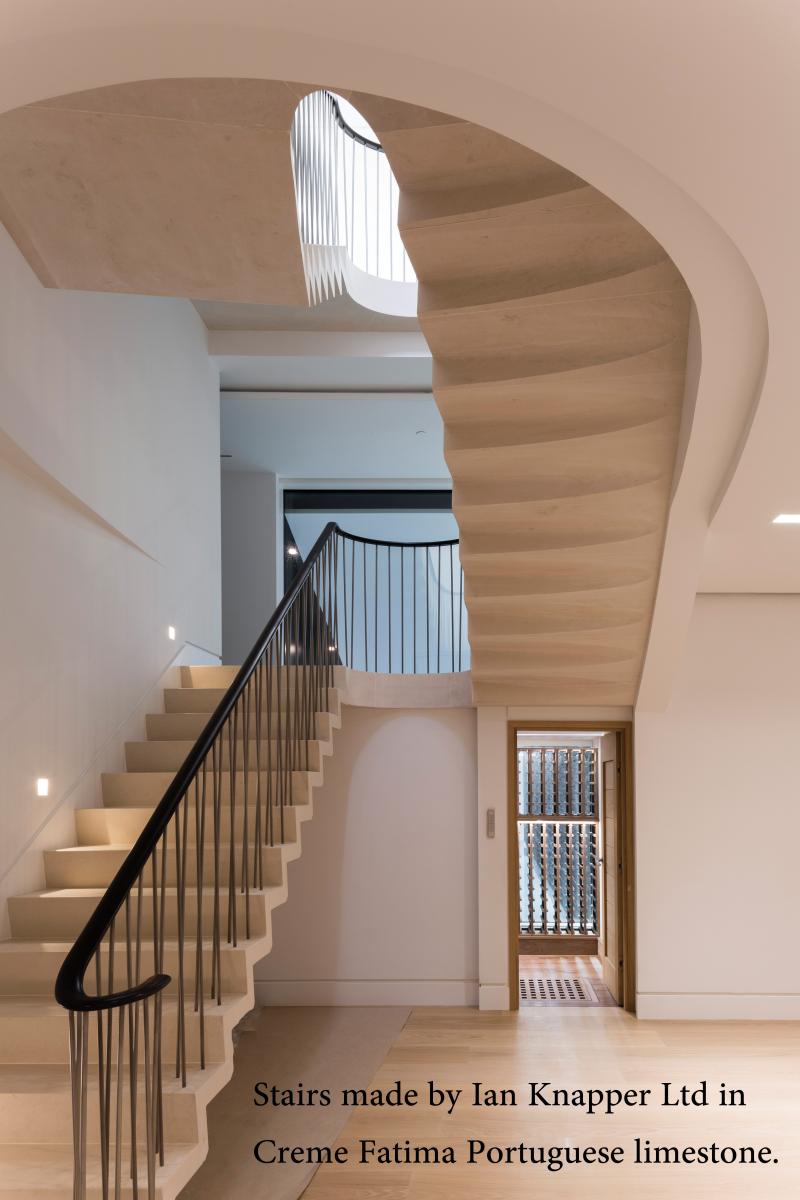 Often so fine that they appear to defy gravity and float between floors, they can appear so delicate that some architects and designers are frightened to include them, or resort to concrete or steel to reinforce them, which compromises their integrity.
Often so fine that they appear to defy gravity and float between floors, they can appear so delicate that some architects and designers are frightened to include them, or resort to concrete or steel to reinforce them, which compromises their integrity.
Calling them cantilevered does not help. It suggests the weight is being carried back to the wall into which they are typically bedded just 100-150mm. But that is not how the weight is transferred to the ground. Each step sits on the one below it, so the weight of the staircase is transferred to the ground through the staircase itself. The stone steps go into the wall to hold the shear stresses in check.
Ian Knapper, one of the traditional stonemasons who has made a speciality of building stone staircases, as well as fireplaces and other architectural stonework, says cantilevered stairs could more accurately be known as penchecks. The pencheck is a rebate at the front bottom edge of each step that the step below is located into. It is this that allows the staircases to be so slender.
The cantilevered staircase has never gone away, but it has been rediscovered since the start of the third millennium, not least of all by the world’s billionaires from places like Russia, China and the Middle East who want to build mansions in the relative calm and stability of Britain.
Ian Knapper is not alone in building stone staircases – A F Jones, Chichester Stoneworks, Boden & Ward and other traditional masons are also happy to oblige – but it is a specialist skill and demand is currently greater than supply.
Ian Knapper has just bought his first CNC machine, a five-axes GMM Egil from Roccia Machinery, to increase productivity. The shape of the steps can be quite complex and Ian is using Alphacam software to design the staircases and transferring the designs straight to the Egil via DXF files. Previously it was all done by hand by the 10 people in the workshops of Ian Knapper Ltd. The Egil has not replaced them but it has increased the output of the company.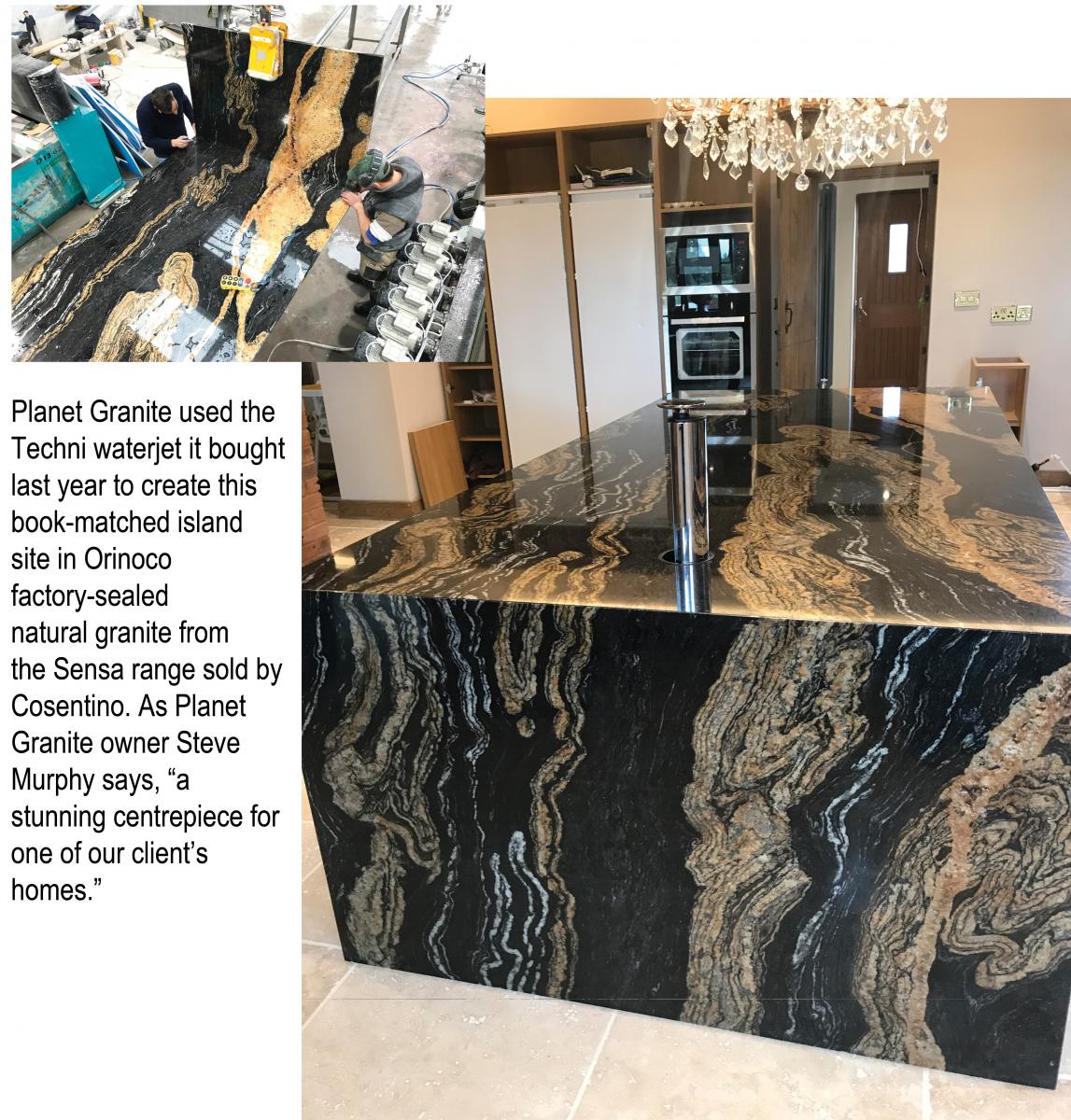
One staircase currently being made by the company is in Carrara Marble. It spans seven flights of a property in Knightsbridge, London, and is costing £1million. It sounds a lot, but amounts to half-a-percent of the asking price of the property.
And it is not a market that is showing any signs of decline. In fact, Ian says he talks to a lot of architects who were not even aware of the options available on staircases. “It’s a largely untapped market,” he says, adding: “It’s a luxury market; it’s always going to be there.”
Another ‘must-have’ in higher end homes is a swimming pool and fitness room. And if you are going to have them, why wouldn’t you use stone flooring and wall linings, especially with underfloor heating being ideally suited to the thermal mass of stone. It is not only property with the luxury of space where pool and fitness extensions are being added. All over London cellars are being dug out to accommodate this essential aspect of modern living.
While a £1million, seven-storey, Carrara Marble helical staircase or a swimming pool might be outside the scope of most of those who do not inhabit the upper quintile of society, even the more modest worktop market is still using a lot of granite, in spite of the growing popularity of engineered quartz, which has expanded the market considerably. Granite and quartz are taking significant market share from laminates.
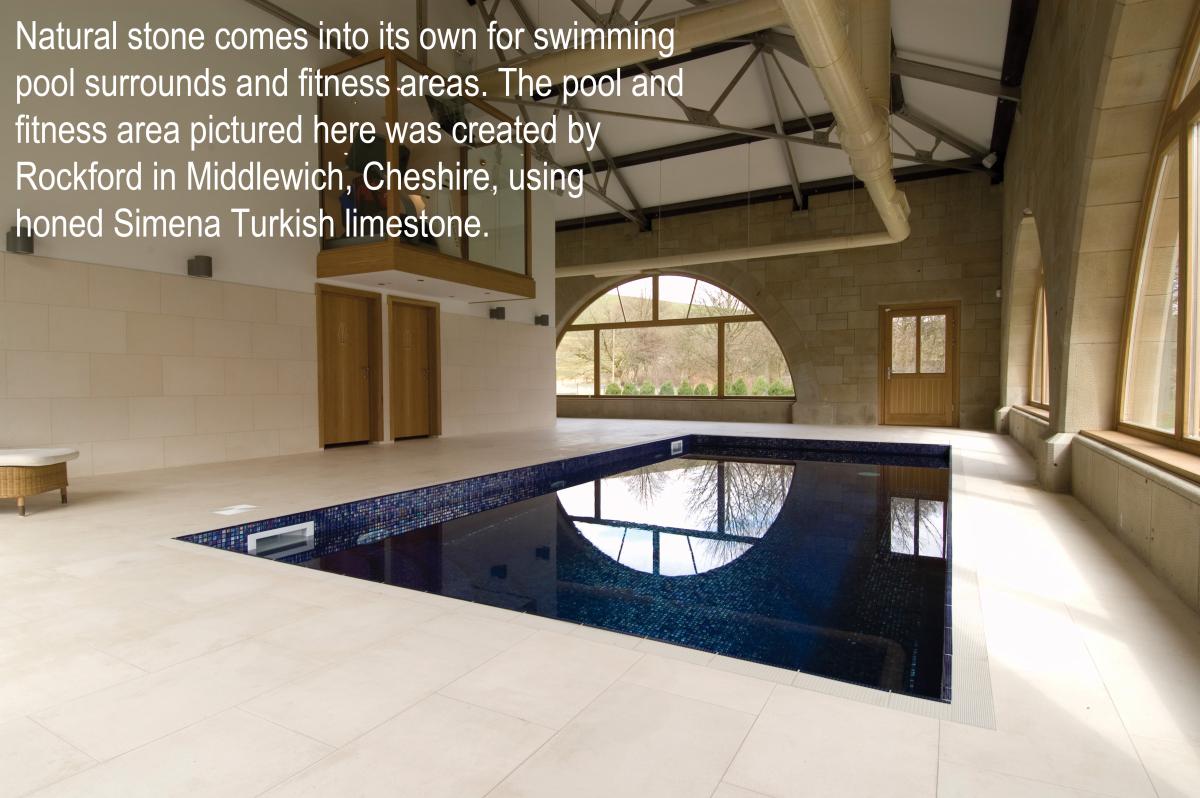 Marble and limestone is also elevating the status of the bathroom or wet room in even quite modest properties as personal grooming takes on a whole new relevance in modern society.
Marble and limestone is also elevating the status of the bathroom or wet room in even quite modest properties as personal grooming takes on a whole new relevance in modern society.
Stone fireplaces remain popular, even if few are quite as spectacular as the one pictured on the left made by Chichester Stoneworks from French Richemont limestone. Even more modest fireplaces can include elements such as carved motifs at prices that are not prohibitive to give more modest rooms a significant focus.
Not that stone interiors are simply about domestic properties. Hard-wearing stone floor and wall tiles are ideal for public areas of commercial buildings. Lately, feature walls and reception desks, often incorporating subtle lighting, have been making significant statements in the public areas of commercial properties. Toilet areas also incorporate a wide variety of stone floors, walls and vanities.
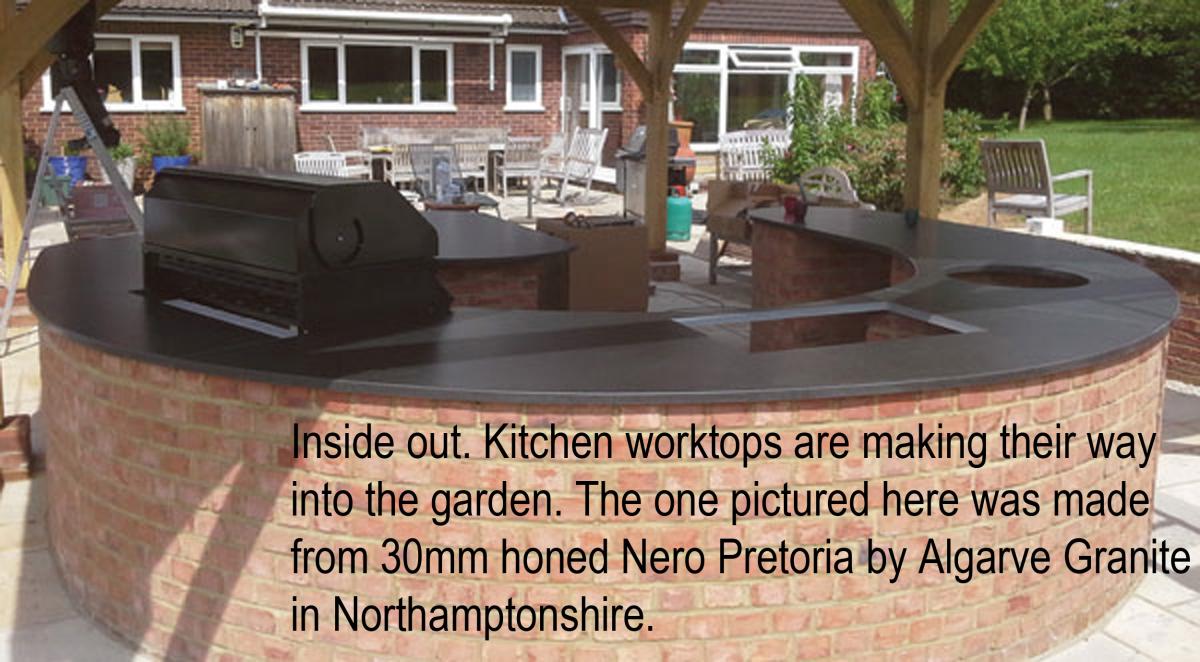 Stone is even contributing to breaking down the interior-exterior demarkation, as it is an ideal material for extending floors on to patios, opened up through bifold doors. And with barbecues having grown into garden kitchens, granite worktops come into their own for this latest extension of outdoor living.
Stone is even contributing to breaking down the interior-exterior demarkation, as it is an ideal material for extending floors on to patios, opened up through bifold doors. And with barbecues having grown into garden kitchens, granite worktops come into their own for this latest extension of outdoor living.

